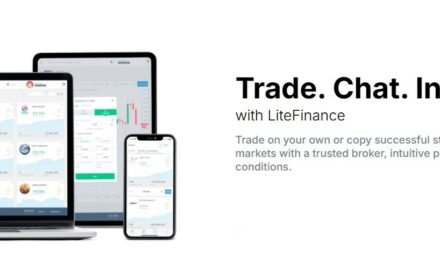Overview
Understanding the importance of risk management is essential for anyone engaging in day trading to achieve good results. It involves reducing risks while maximizing returns, and is one of the most important things that traders and investors should always be aware of! In the last decade, the global financial environment has experienced a massive increase in growth. Now, people from all corners of the globe are able to partake in the financial market, which was once the domain of only the largest banks and hedge funds. This article will outline how risk management in day trading is important, the tools available to do so, and the key points to keep in mind.
READ: Day Trading Guide | Basics of Prop Trading
What is Risk Management?
Risk Management is an essential concept in forex trading, as it involves forecasting and evaluating financial risks, as well as identifying key strategies to minimize their impact. Without a proper understanding of this concept, traders risk incurring large losses. Traders in the traditional business world typically balance supply and demand to better serve their customers. Forex traders must also utilize risk management strategies to protect their accounts from risk. It is essential to have a strong foundation, but you must adjust your efforts to avoid risks when you gain new knowledge or when the market shifts.
Risk Management for Day Traders
- Momentum Day Traders: Focus on stocks that are experiencing high levels of volatility and are making large price movements throughout the day.
- Scalping Traders: Take advantage of tiny price fluctuations in various stocks and aim to make a small profit for each trade.
- Swing Day Traders: Focus on catching larger trends in the stock market and holding positions for a few days.
- Arbitrage Traders: Taking advantage of price discrepancies between different markets or different companies.
- Position Day Traders: Positioning in stocks for days or weeks in order to capitalize on longer-term trends.
- High-Frequency Day Traders: Utilize complex algorithms and automated trading software to take advantage of small price movements in a fraction of a second.
Strategies
Risk management strategies involve identifying, assessing, and prioritizing risks, and then devising and implementing strategies to mitigate or reduce them. These strategies may include avoiding risks, transferring risks to another party, reducing or controlling risks, and accepting risks. The strategies may involve the use of insurance, contracts, legal advice, financial instruments, and other methods. Many organizations have dedicated risk management teams to oversee the development and implementation of risk management strategies.
- Avoiding risks: Taking steps to prevent certain risks from occurring.
- Transferring risks to another party: Passing on risk to another entity, such as an insurance company, through a contract or agreement.
- Reducing or controlling risks: Taking steps to reduce the likelihood of a risk occurring or the impact it has if it does occur.
- Accepting risks: Deciding to accept a risk instead of taking steps to reduce or control it.
Advanced Risk Management Strategies
Analyzing Scenario
Prior to embarking on any type of trading, it is essential to perform an analysis of the assets or instruments that are being traded. This analysis should include both fundamental and technical analysis. Be aware of the current economic climate if you are looking to make a trade denominated in US dollars. You should factor in any economic data that is being released when deciding how to allocate your trading. You can determine whether the market is in a range or trending by using technical analysis. It will assist you in making sound business decisions.
Two-Day Low
An advanced risk management strategy, the Two-Day Low Strategy, protects against losses due to market volatility. This involves buying and holding stocks for at least two days before selling them. Thereby allowing for the stock prices to stabilize and potentially increase. Reduce the risk of buying stocks at a high price and selling them at a low price by using this strategy. It also provides an opportunity for investors to take advantage of short-term price changes while still minimizing their risk. This strategy is a great way for investors to take advantage of volatility without having to worry about major long-term losses.
Risk Management Pros
Embracing risk management in the financial market offers numerous advantages. Some of the key benefits include:
- Reducing potential losses by limiting the amount of capital that is exposed to risk.
- Reducing the emotional stress associated with day trading by having stop-loss orders in place.
- Helping to identify and control the amount of risk that is taken on each trade.
- Increasing the chances of success in the long-term by helping to manage risk.
- Providing a framework for making better trading decisions by understanding the risks and rewards associated with each trade.
Risk Management Key Features
Risk-Reward Ratio
One of the key features of risk management is the risk-reward ratio. This is the ratio of potential risk or loss to potential gain or reward. The goal of risk management is to determine the right balance between the potential risk and potential reward. This risk-reward ratio helps to identify the optimum level of risk and reward for any given situation.
As a trader, the key to success is to attempt to reduce the degree of risk in any trade made. The suggested risk-to-reward ratio for a day trader should be 1:2; meaning if you hope to make $50 in a trade, you should be comfortable with the possibility of losing $100. This will safeguard your account from potential risks associated with making trades.
Overnight Trades
With overnight trades, it is important to understand the associated risks and how to manage them. Overnight trades allow traders to take advantage of the 24-hour market and potentially earn higher returns. However, due to the extended time frame of the trade, there are higher risks associated with these types of trades. Risk management key features such as stop-loss orders, margin requirements, and proper asset allocation can help mitigate these risks. By implementing these key features, traders can reduce the potential for large losses and ensure that their trading strategies are sound.
Stop-Loss Orders
This type of order instructs a broker to close a position when the market price reaches a predetermined level. Ensuring that the trader is not exposed to excessive risk helps minimize losses. Traders can use stop-loss orders to lock in profits. By setting a stop loss order below the entry price, the trader can ensure that they exit the trade when the price reaches a certain level. They can capture profits that would otherwise be lost by this. Stop-loss orders can be set in both long and short positions. It is an essential part of risk management.
Diversification
Diversification helps reduce risk by spreading capital over different types of investments. This helps in reducing the impact of losses due to any single investment. Diversification also helps in balancing out different types of risk, such as market, inflation, and interest rate risk. It also helps in minimizing the effects of market volatility. Having a portfolio that is diversified across different asset classes, sectors, and geographies is a great way to reduce overall risk and maximize the potential for returns.
Trade Size Control
Trade size control allows a trader to adjust the size of their trades in order to reduce the risk of taking on too much risk. This is important to help prevent catastrophic losses. Additionally, to ensure that risks are managed in a way that is consistent with a trader’s risk tolerance. Trade size control also allows a trader to adjust their trades in order to take advantage of market movements. Allowing them to adjust their trades in order to take advantage of potential profits. Risk management features such as trade size control are essential for successful trading. It should be an integral part of any trading system.
Risk Management Psychological Aspects a Day Trader Should Possess
- Self-awareness: Understanding your own emotions and reactions to different market situations can help you make sound decisions.
- Discipline: A disciplined trader would have a clear set of strategies and rules that they follow regardless of the market conditions.
- Patience: Patience helps to avoid making rash decisions when trading.
- Emotional Control: Being able to control emotions such as fear and greed can help to make the right decisions when trading.
- Risk Assessment: Assessing the risk before entering a trade can help to reduce losses.
- Risk Mitigation: Implementing strategies to mitigate risks can help to reduce the likelihood of losses.
- Money Management: Establishing a good money management plan that outlines the amount of money you are willing to risk on each trade can help to reduce losses.
Risk Management in Day Trading | Conclusion
In conclusion, risk management is an essential component of day trading. Knowing how to manage risk effectively can make all the difference between success and failure in day trading. It is important to understand and plan for the different types of risks associated with day trading, such as market volatility, liquidity risk, and margin risk. By understanding the risks and developing an appropriate risk management strategy, day traders can maximize their potential for profitability.














